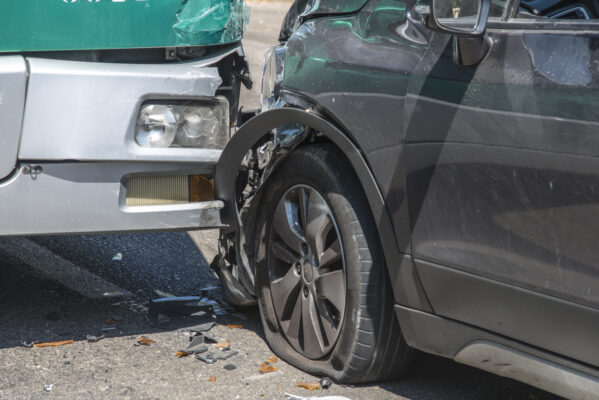Accidents involving buses can have devastating consequences, impacting the lives of passengers, pedestrians, and other motorists on the road. Payne County, Oklahoma, like many other regions, has experienced its share of bus accidents, raising concerns about road safety and the factors contributing to these incidents. In this article, we delve into the causes of bus accidents in Payne County and explore the requirements to address this critical issue.
Common Causes of Bus Accidents
Bus accidents can occur for various reasons, often resulting from a combination of factors. Understanding these causes is essential for implementing preventive measures and promoting safer roadways.
- Driver Fatigue: Bus drivers often work long hours, leading to fatigue and decreased alertness. Fatigued drivers may struggle to react quickly to changing road conditions or unexpected situations, increasing the risk of accidents.
- Distracted Driving: Distractions such as texting, talking on the phone, or adjusting the radio can divert a driver’s attention away from the road. Inattention, even for a few seconds, can lead to tragic consequences.
- Poor Maintenance: Neglecting regular maintenance of buses can result in mechanical failures, such as brake malfunctions or tire blowouts, which can lead to accidents.
- Weather Conditions: Adverse weather conditions, such as rain, snow, or ice, can make roads slippery and reduce visibility. Buses, due to their size and weight, are especially vulnerable to losing control in such conditions.
- Reckless Driving: Speeding, aggressive driving, and ignoring traffic rules significantly increase the likelihood of accidents involving buses.
- Inadequate Training: Bus drivers must undergo proper training to handle these large vehicles safely. Inadequate training can lead to errors in judgment and maneuvering, contributing to accidents.
- Poor Infrastructure: Road design flaws, inadequate signage, and poorly maintained roads can create hazardous conditions that increase the risk of accidents.
- Vehicle Defects: Manufacturing defects or faulty parts in buses can lead to sudden malfunctions, causing accidents.
Legal Requirements and Regulations
Addressing the issue of bus accidents requires adherence to legal requirements and regulations aimed at ensuring the safety of passengers, drivers, and other road users.
- Licensing and Training: Bus drivers must possess a commercial driver’s license (CDL) and undergo comprehensive training to operate these vehicles. The training covers driving skills, safety procedures, and emergency protocols.
- Hours of Service (HOS) Regulations: Federal regulations limit the number of hours a bus driver can work within a specific timeframe. These regulations aim to prevent driver fatigue and ensure drivers get adequate rest.
- Maintenance Standards: Bus companies are responsible for maintaining their vehicles to ensure they are in safe operating condition. Regular inspections, maintenance schedules, and record-keeping are essential components of meeting these standards.
- Safety Equipment: Buses must be equipped with safety features such as functioning seat belts, emergency exits, fire extinguishers, and first aid kits.
- Insurance Requirements: Bus companies are required to carry sufficient insurance coverage to compensate victims in the event of an accident. Adequate insurance helps ensure that victims receive the necessary support for medical expenses, property damage, and other losses.
- Federal Motor Carrier Safety Administration (FMCSA): The FMCSA establishes and enforces safety regulations for commercial vehicles, including buses, operating in interstate commerce. Compliance with FMCSA regulations is crucial to maintaining safe bus operations.
Preventive Measures and Community Involvement
Addressing the causes of bus accidents requires a multifaceted approach that goes beyond legal regulations. Community involvement and preventive measures play a pivotal role in ensuring road safety for everyone.
Public Awareness Campaigns:
Raising awareness about the dangers of bus accidents and educating the public about safe driving practices can significantly reduce the occurrence of accidents. Public awareness campaigns can include informational sessions, workshops, and social media campaigns aimed at promoting responsible driving behaviors.
Driver Training and Education:
Bus drivers are on the front lines of road safety, and their proper training and education are essential. Bus companies should invest in ongoing training programs that focus on defensive driving techniques, handling challenging road conditions, and managing stress while on the road.
Maintenance and Inspection Protocols:
Bus companies must establish stringent maintenance and inspection protocols to ensure the mechanical integrity of their vehicles. Regular inspections can identify potential issues before they lead to accidents, thereby safeguarding passengers and other road users.
Road Infrastructure Improvements:
Collaboration between local authorities and transportation agencies can lead to road infrastructure improvements that reduce the risk of accidents. Proper road design, clear signage, and well-maintained surfaces contribute to safer travel conditions for buses and other vehicles alike.
Preventing bus accidents requires a concerted effort from bus companies, drivers, regulatory agencies, and the community at large. If you or a loved one have been involved in a bus accident in Payne County, Oklahoma, it’s important to seek legal guidance to understand your rights and options.
At Murray Law Firm, we specialize in personal injury cases, including bus accidents. Our experienced team is dedicated to helping victims and their families receive the compensation they deserve. We understand the complexities of bus accident cases and will work tirelessly to hold responsible parties accountable for their actions.
Don’t hesitate to reach out to us for a free consultation to discuss your case. Together, we can work towards safer roads and a brighter future for Payne County. Contact Murray Law Firm today to ensure your rights are protected and justice is served.
